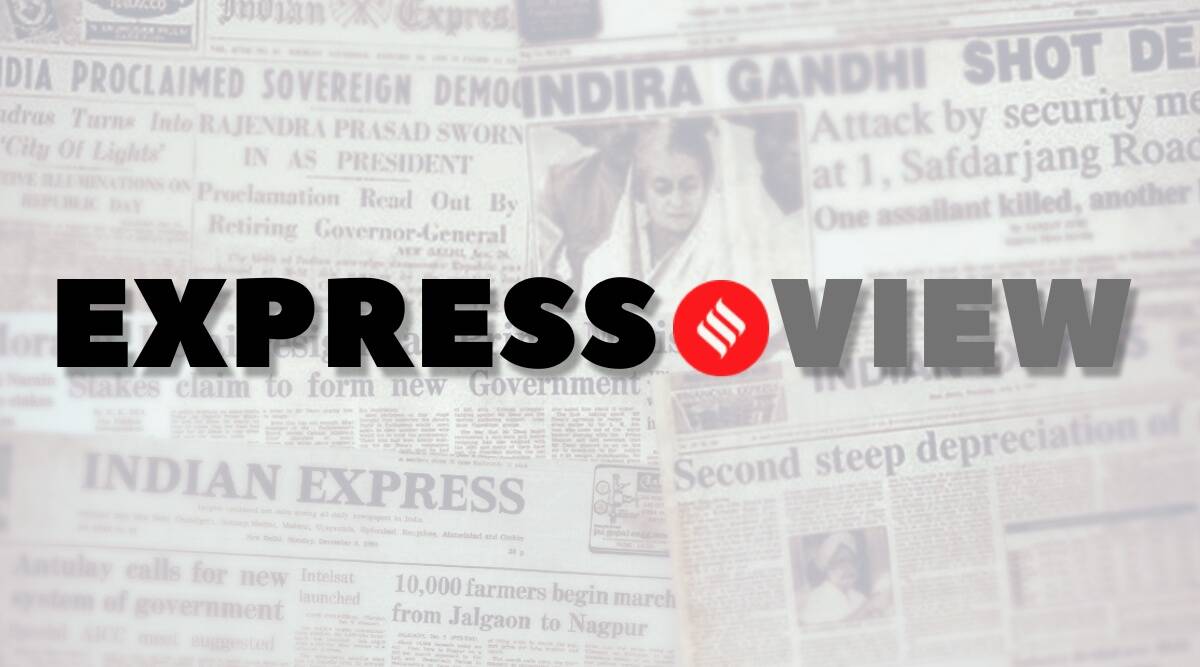 The task of reconstruction of the party organisation and politics — Congress's serial electoral routs indicate that nothing less will do — must be undertaken in a particularly challenging set of circumstances.
The task of reconstruction of the party organisation and politics — Congress's serial electoral routs indicate that nothing less will do — must be undertaken in a particularly challenging set of circumstances.Mallikarjun Kharge, widely seen as the establishment candidate, blessed by the Gandhis, has defeated Shashi Tharoor in the Congress’s internal election to become president of the party. This result, unsurprising and foretold, could be the end of that story. Or not. It could also be a new opening line for a flailing party. Of course, it is difficult to write new scripts for an organisation as old and as jaded, weighed down by its own past as the Congress. President Kharge’s table is surely already sagging under the weight of its several and simultaneous challenges. But what he can build on, going forward, is a faint stirring — for the first time in over two decades, Congress has conducted an election for the top party post, and elected someone who does not belong to the Gandhi family. The fact of the contest indicates a tentative break from a dismal status quo. After all, it has been Congress tradition to privilege a “consensus” that allows it to remain unmoved by its own crises. While he may not articulate the need for change as eloquently as the defeated Tharoor who wrote out a manifesto for this election, Kharge — veteran of several elections, who brings to his job a hard-won sense of ground-level politics and, as a Dalit leader, an arc that is arduous and inspiring — must know that it cannot be Congress politics as usual.
The task of reconstruction of the party organisation and politics — Congress’s serial electoral routs indicate that nothing less will do — must be undertaken in a particularly challenging set of circumstances. Congress’s position as the centrepiece of a one-party dominant system has been taken by a party that has not allowed successive victories to blunt its will-to-conquer. At the Centre and in the states, Congress confronts a two-faced challenge — overtaken by the more organised and ideologically driven force of the BJP in some arenas, and pushed on to the backfoot in others by far more agile regional outfits. In this climate, if it is to become winnable again, it must begin by defining, redefining and updating its positions on key issues, ranging from the place of minorities in a post-Hindutva polity, the form and content of nationalism in the 21st century, to the economic road-map after the pandemic. Once it has a message, in place of the current opportunism and/or incoherence, it must find a more effective and imaginative way of communicating it to the electorate. For this, it will need to revive party units at the lower levels that have been left to languish and wither away by successive high commands that surrounded themselves by air-tight cabals of unelected and unelectable advisors. The party, haughty even in defeat, will also need to work on its relationships with other parties of the Opposition, necessary for taking on the dominant BJP.
It’s a tall task and it remains to be seen if the Congress’s new president is up to it. The first step may prove to be the most difficult of all — to etch out his degrees of independence from the man currently on the Bharat Jodo Yatra, which may be an individual’s image-building vanity project or a move in lockstep with the party.